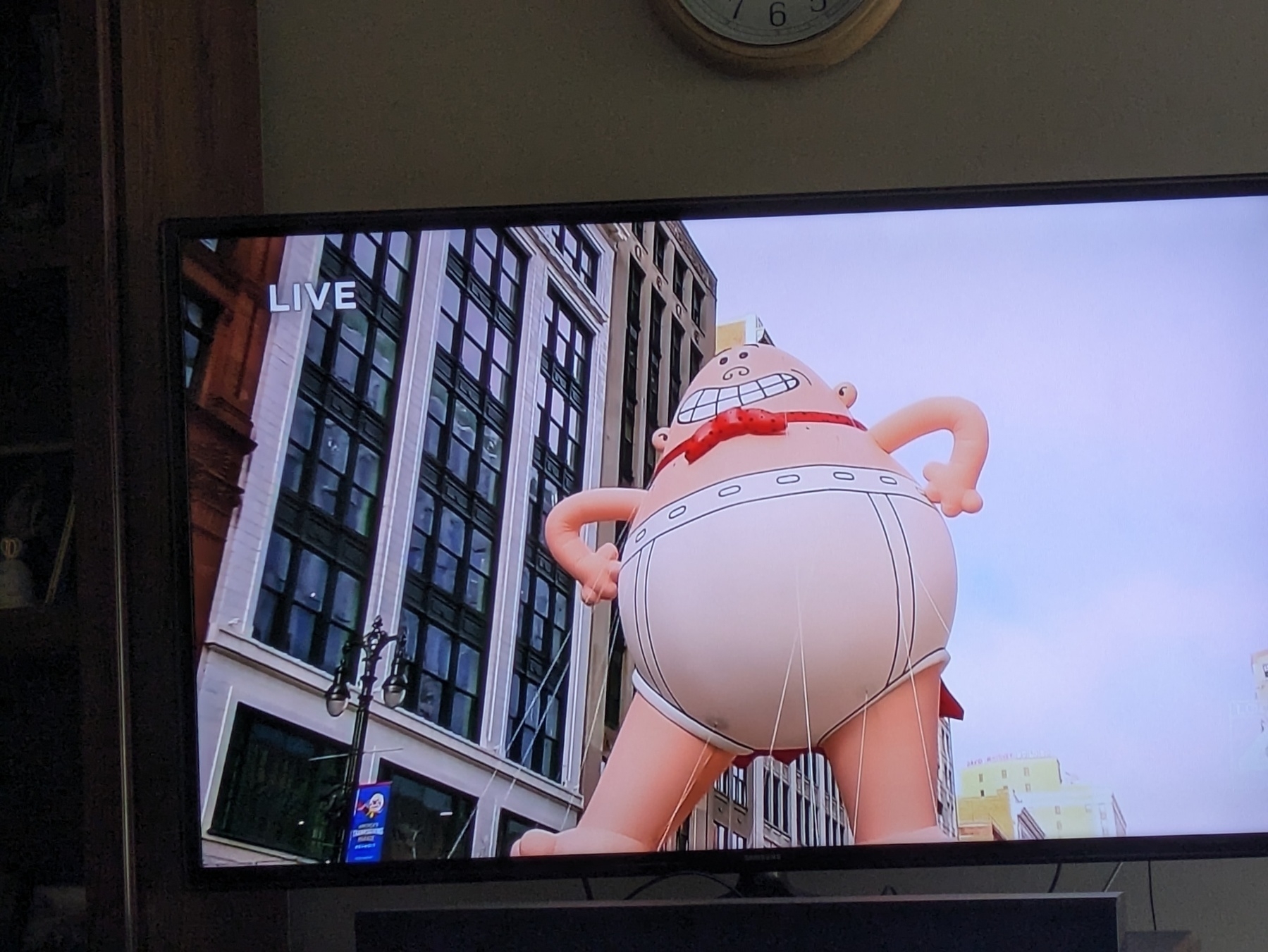Google dropped the December Feature update for their Pixel products that includes new watch faces that are already available in the Watch app on my phone. I’ve added the Adventure face to my watch. I also took a look at the tiles and found new Spotify tiles including one for their DJ that I am trying out. One surprise is that the Spotify Wear OS app does not know about my Google Nest products but it does now my Amazon Echos.
Seems to me that the 2023 college football “playoff” decision that picked Texas and Alabama over undefeated Florida State is strong evidence for lawsuits filed against the NCAA that claim athletes should be treated as employees. The selection was made for the sake of producing the best “made for TV event” rather than on competitive results, in other words, it was a business decision. Call it what it is, figure skating style judgement decisions, not a playoff, and stop calling the ultimate winner a national champion when you limit the competitors to a subset of the overall field.
I think most people intuitively know the corruptible nature of wealth, and that is why they don’t trust any of our institutions. We see any report from a media outlet as simply a vehicle for making money. We believe doctors prescribe drugs that they get paid to push. We believe lawmakers only exist to pass laws for companies from which they have already been paid via lobbyists. Yet, we buy the idea that a corruptible private entity is better than a public one and so we want a government that does nothing in favor of corporations doing everything and consequently we don’t favor publicly funded research. In my opinion the what we saw play out this past month with OpenAI is trying to graft the idea of a public good on to a capitalistic entity and that is incompatible because profits will drive every decision.
When Feeling Better Trumps Being Better
I am reading Jonathan Haidt’s article in The Atlantic, The Coddling of the American Mind, and I am wondering whether the hypersensitivity to emotional wellbeing Haidt describes can be somewhat attributed to our associating gun violence to mental illness over the last several decades. Mental illnesses are real but I think are diminished when we start tossing out the term as being the cause to all our ills. Perhaps it would not be an issue if we actually did something about mental illness, but I think we mostly talk about it. Our unwillingness to actually address problems and instead simply focus on symptoms is teaching generations of people that symptoms are actually the problems when they are not.
What Haidt does not address in the article is how hypercapitalism, which is the practice in the United States of prioritizing wealth over everything, contributes to the problem. We have many religions in the United States, but I think capitalism is the one that rules them all. The religion of capitalism preaches that there are to be no restraints on one’s ability to be wealthy and thus it teaches that the ends justify the means.
Manipulating emotions may be the number one tool of generating wealth in the United States. Marketing and advertising is emotional manipulation for the purpose of selling products, the buying of which produces wealth. Advertising is all about coveting that which another has and thus has existed ever since humans became aware of their surroundings. Technology continually optimizes advertising and today’s targeted and viral ads are extremely effective at making us covet.
No popular church nor religion in the United States truly teaches the dangers of wealth. Who preaches and teaches enough is better than more? Heck, the “ministers” of many of the most well known churches in the United States are themselves extremely wealthy. Yet, Christianity claims association to Jesus who plainly taught of these dangers. The consequence is that we live in a society that actually encourages the practice of one profiting off the suffering of another.
Children are immersed practically from the moment of birth in emotions, and our religions teach them how to feel better. The pursuit of happiness is a treadmill for the more and the idea that there is enough for all to be happy is considered un-American. We are frogs floating in warm pot of water and the temperature is increasing toward death.
Seems to me there ought to be one simple message broadcast large, wide, and far, and that is to not trust anything on X, the site formally known as Twitter. Nor trust Facebook, Instagram, or any other social network. If you read something that is making you angry, consider for a moment that is intentional to extract money and may nor not be based on fact. Either way, the best action to take is no reaction.
The epitome of a gray day.

Notice that the version of Feedland Dave is built to be hosted by Wordpress is at feedland.com.
Article recently published lists the metro Detroit intersections with the most crashes during 2022. I live near, and thus frequently drive through, numbers six and nine on the top ten list. Both of these intersections are rounds, which I like but note that nearly everyone drives through the rounds too quickly. If they really wanted to decrease the crashes at these points they would install cameras with automatic ticketing.
Apparently writing and maintaining a list of apps that one uses is a thing. Some folks are even publishing this info via RSS, although I am not sure that makes sense to me. A while back I created a page of technology that I use that has a section I call Every Day Apps that maps to this use case. I see that I never completed that list nor put in links, so perhaps I’ll spend some time updating.
I think this says that I am boring.

Is it just me, or does there seem to be server problems in micro.blog land today? Seems like external app access is available, I am able to access via lillihub.com but not the micro.blog domain.
My Praise for Micro.blog
The posts that I write here are hosted on a platform known as micro.blog that hosts my feed (in RSS format) and a network of feeds to which members of the platform contribute. The feeds are rendered in a timeline format accessible via web and mobile applications developed and maintained by the platform founder Manton Reece and his colleagues. Micro.blog hosts each member’s feeds rendered in a web site that can be accessed by a domain name owned by the member, such as mine at https://frankmcpherson.blog. The feeds are open such that other people like Loura can write their own web applications to render the feeds in a timeline format and make it usable by other members. Alternate mobile applications are also available. Finally, one can write and publish posts from alternate applications like Drummer, which I am currently using. In summary, micro.blog is an example of a successful, open platform built and maintained by a handful of people, enhanced by a community of members, and is affordable.
Never before, in my life time, have I seen a person who ran for President of the United States and lost be nominated again by their party for the next election. Practically, once a person has proven to be a loser the power of the dollar moves on to a different person. In this context one can understand Trump’s continued insistence that he won the 2020 election, or at worst Biden stole it, for the sake of being relevant and gaining the money needed for him to run again. It appears many past Republican donors are holding out, probably because they really don’t want to waste their money on a loser. Pragmatically their decision will be on whether they become convinced Trump is the only person who can replace Biden, right now it appears they are not so sure.
I’ve come to the belief that religion may be the most dangerous of our instincts because of how it is used by those in power to gain and grow that power. Slavery was justified by religion. The Klu Klux Klan used religion to terrorize, Hitler used religion as the basis for genocide, and we see this cycle through out history onto the present. The “fight” over and the emergence of Artificial Intelligence is all about power, derived by wealth through religion. What I fear most about the religions of effective altruism and effective accelerationism is that their adherents are already extremely powerful, which makes them extremely dangerous. It’s not the technology of AI that scares me, it’s the people and the religion of those who seek to own it that scare me.
What OpenAI Shares With Scientology:
“The OpenAI saga is a fight between God and Money; between a quite peculiar quasi-religious movement, and a quite ordinary desire to make cold hard cash. You should probably be putting your bets on Money prevailing in whatever strange arrangement of forces is happening as Altman is beamed up into the Microsoft mothership. But we might not be all that better off in this particular case if the forces of God were to prevail, and the rationalists who toppled Altman were to win a surprising victory. They want to slow down AI, which is good, but for all sorts of weird reasons, which are unlikely to provide good solutions for the actual problems that AI generates. The important questions about AI are the ones that neither God or Mammon has particularly good answers for – but that’s a topic for future posts.”
The basis of my concern about AI and the saga that unfolded weeks ago is the knowledge that humans see the world in the simple binary of winners and losers; this is the true original sin that leads to the biblical story of Cain and Abel. The primary basis of our survival has been laws of restraint of our demons, but our demons fight against these laws and they are winning. Liberty is being taken from us out of sight and will close faster than we can react and without a shoot fired. We are simply unable to not do something, even if we can do it, and that will lead to our demise.
My first walk today was in the falling snow, the first of the season.

Have no fear…

I can’t help but feel that the big picture behind the OpenAI saga that occurred over the last fourteen days should be the recognition that the greed inherent in capitalism is dangerous and may ultimately lead to our undoing. We should remember that it is such greed that lead to the Great Depression, and even more recently to the 2008 financial crisis, and frankly is behind much of the current trend to move away from democracy in the United States. Our acceptance of the reality that it’s ok for people to profit off the suffering of others lead to big tobacco, the opioid crisis, and the continuing mass murders in the United States. I fear this will all continue so long as we continue to accept that the ends justify the means.

Finished reading: People of the Way by Kurt Struckmeyer 📚